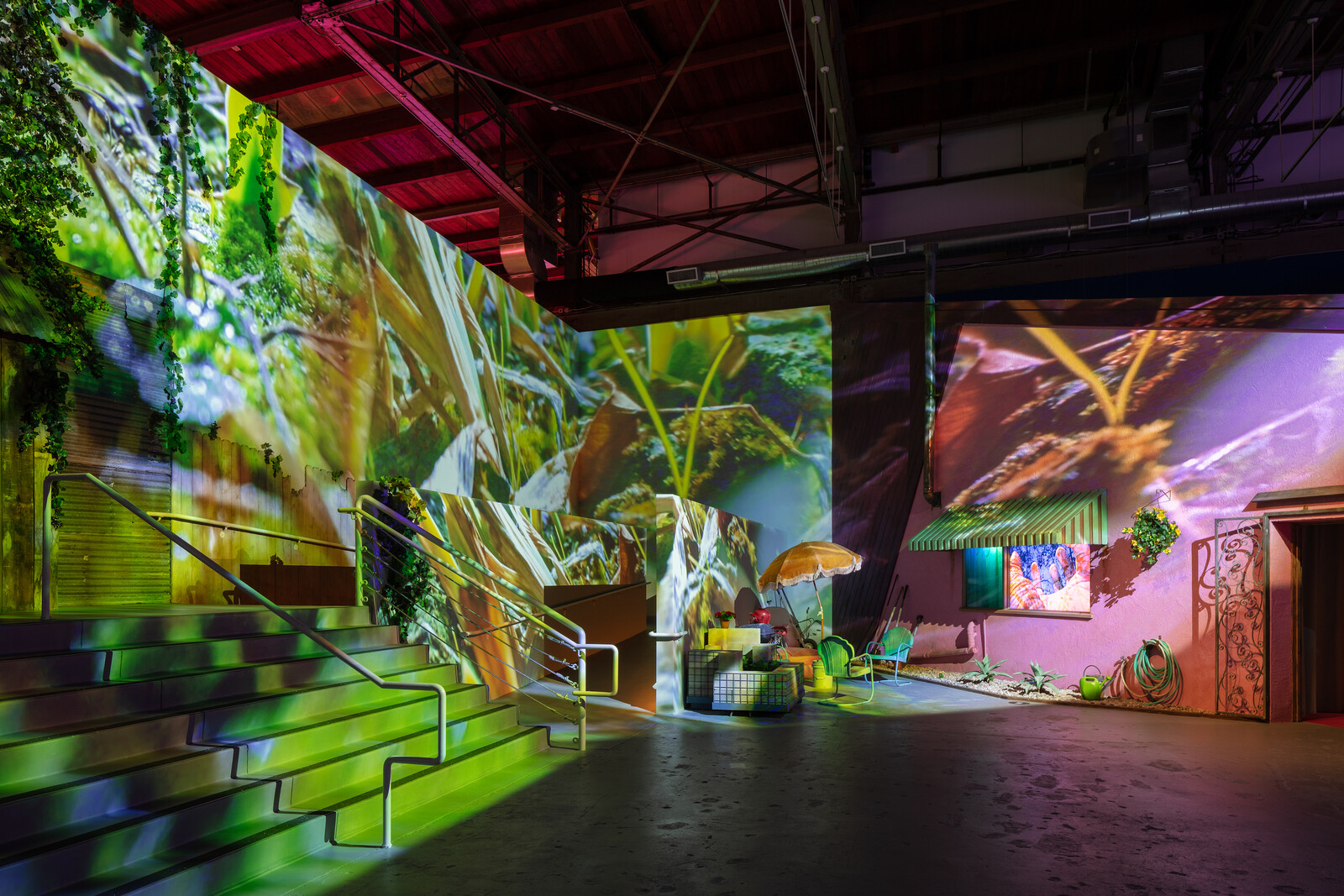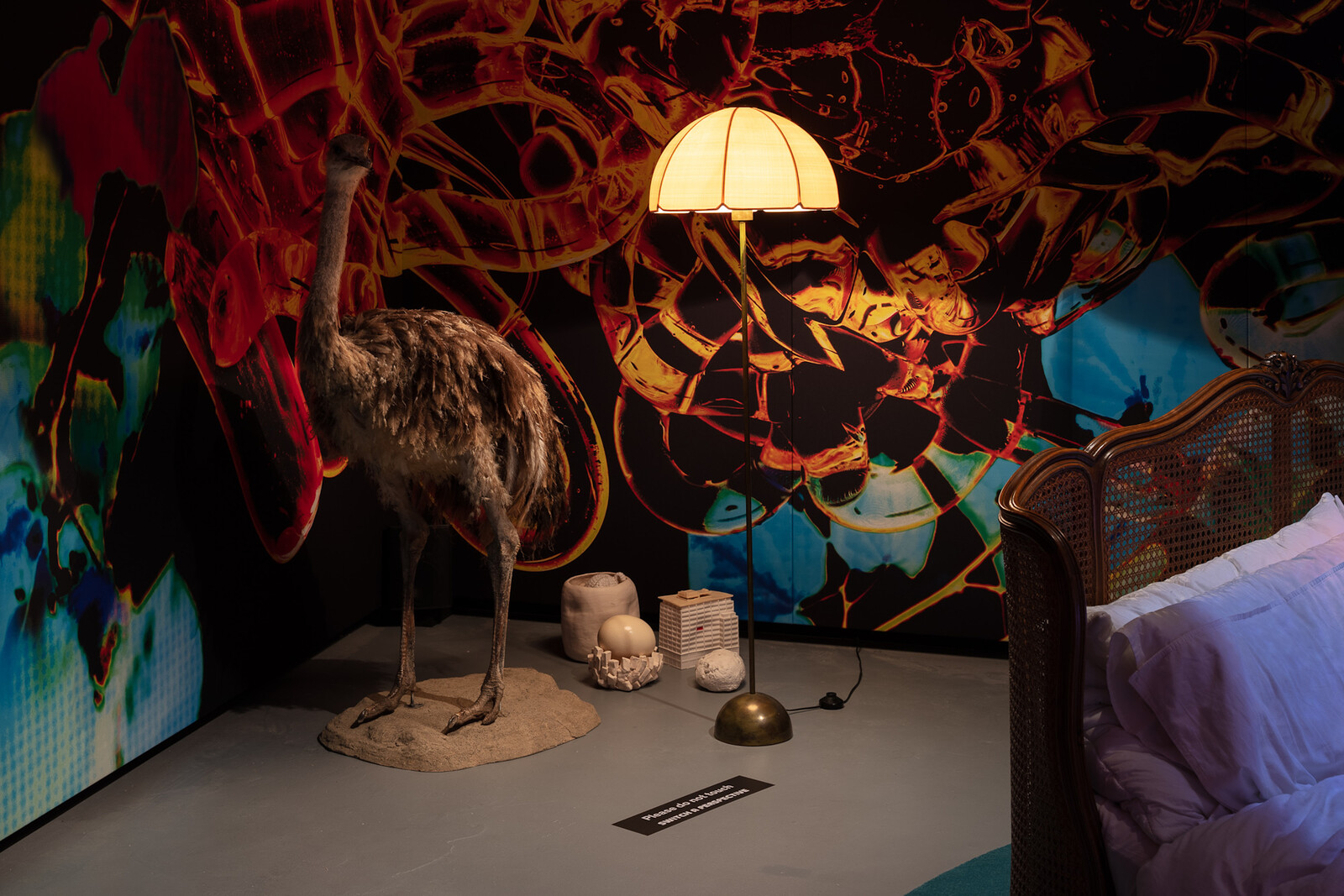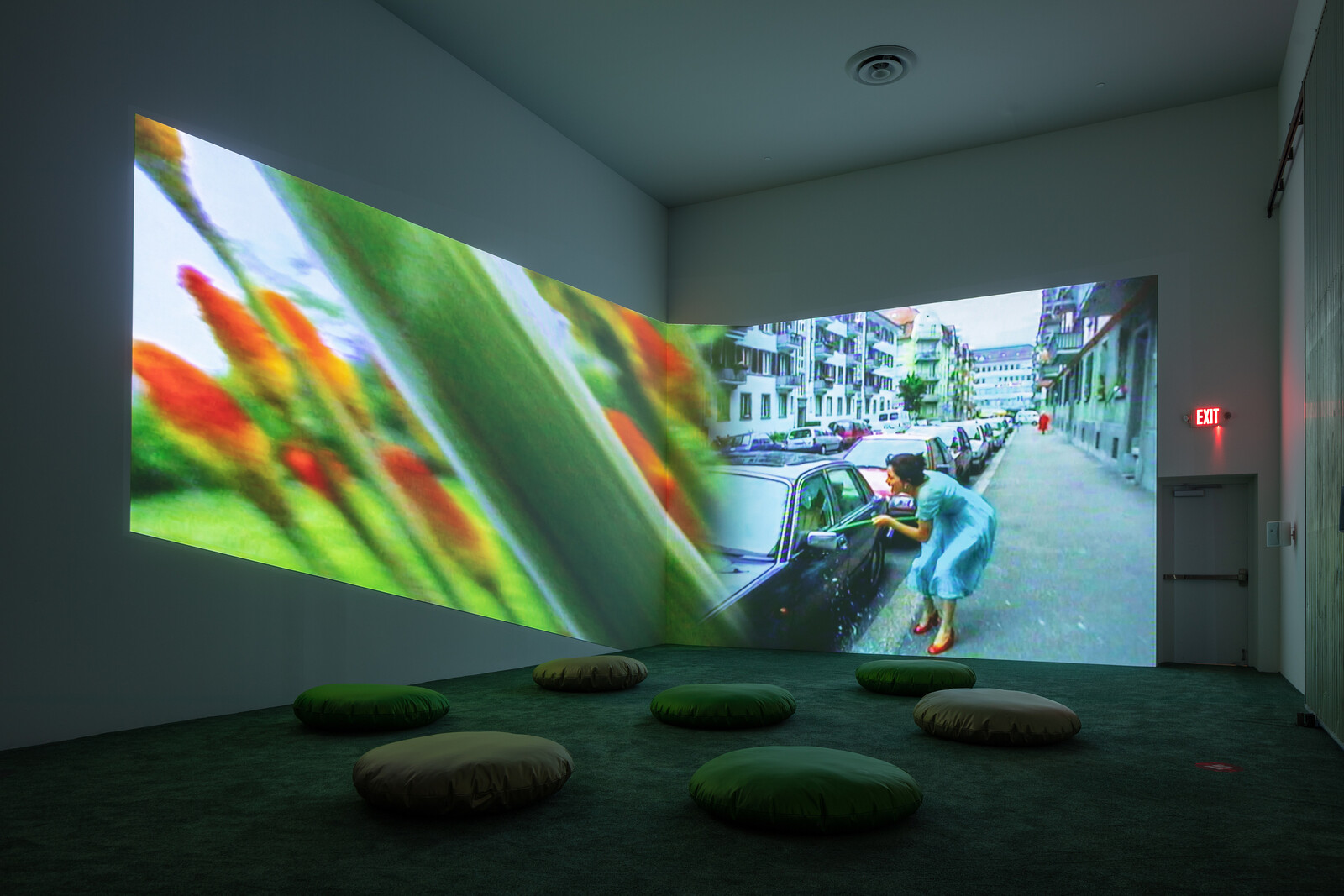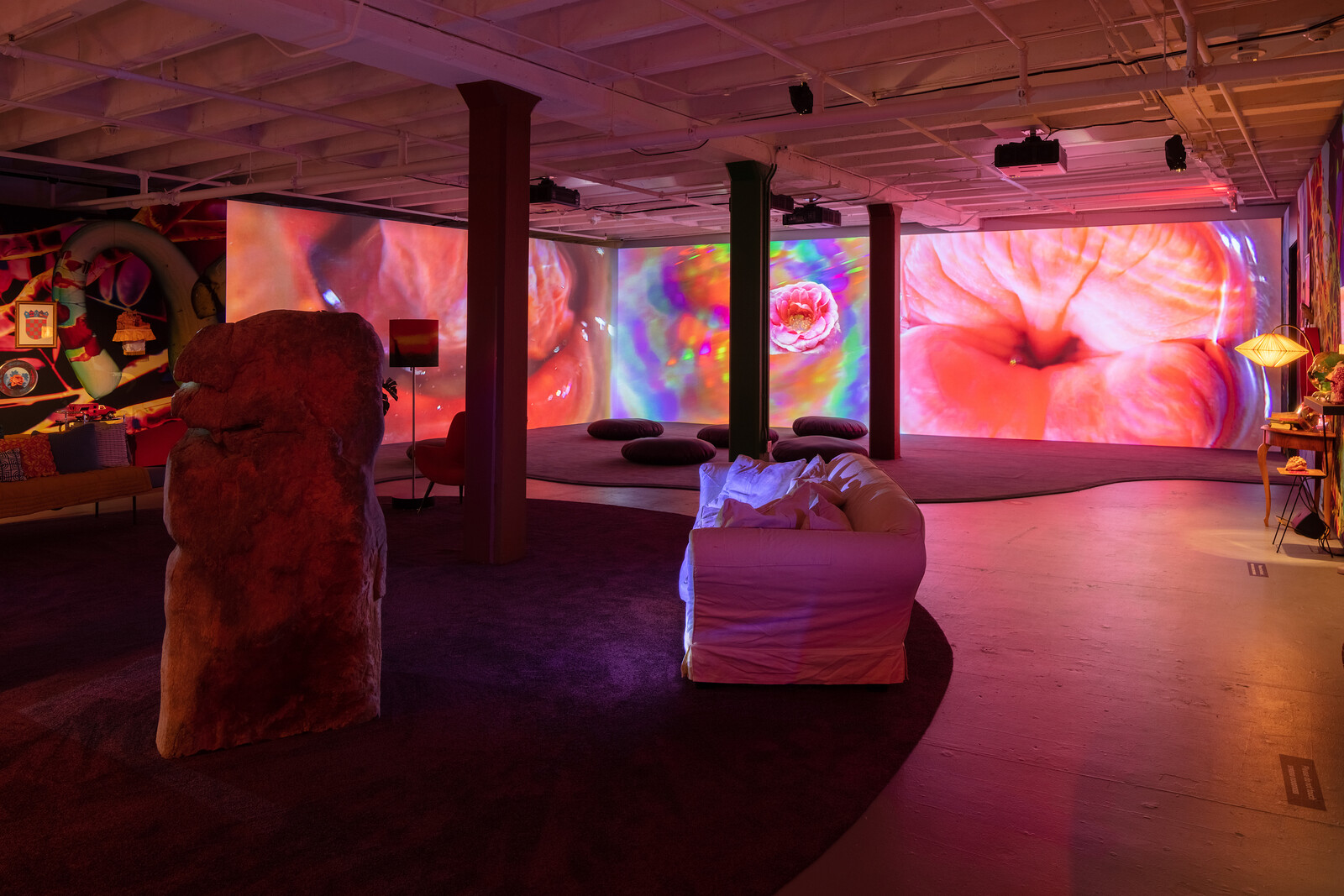“Stay home.” Where or when does comfort become confinement? Pipilotti Rist’s exhibition in MOCA’s Geffen Contemporary warehouse invites us to take an entertaining, even rejuvenating stroll through Rist’s “neighborhood,” a place provocatively split in two, where the bodies on screens present little to no risk and plenty of reward.
As a survey of Rist’s substantial production from 1986 to the present, “Big Heartedness, Be My Neighbor” sets out to achieve the kind of wish-fulfilment its title proposes. Moving from the entrance past a theatrical curtain into the exhibition, the neighborhood is suddenly there below—we enter from slightly above—all at once a stage set and an apparition, aglow with colorful imagery moving across the walls of its buildings and the communal grounds surrounding them, caught in the middle of a kind of pre-performance begun before we even arrived. (Or, more likely, a sequence that neither starts nor stops, just exists.) There are also sounds, voices even. At first they seem to be over … there, beckoning from the housing or near the picnic tables in a park, but then, there she is, that small mirage and small voice crying out at your feet.
What to do here with one of Rist’s most compelling, most satisfying works? How can it be that Selbstlos im Lavabad [Selfless in the Bath of Lava] (1994) is so tiny yet commands the entire space of this ostensibly big-hearted neighborhood? Why is this shrunken video of Rist with white hair yelling things like “help me!” in several languages while she is being consumed by hellfire here when we first arrive? To say the work is a cautionary tale is an understatement, but we’ll see her again, because we’ll have to pass by her to get out.
The neighborhood is anchored by two, maybe three sites. The first, to the left after the entrance, is “The Apartment,” a self-contained interior space filled with numerous works made between 2006 and 2019, many of which incorporate actual furniture and objects into tableaux. Couches, tables, and just enough clutter scattered around provide the requisite comfort of home. The second, to the right, is the aforementioned communal grounds; an “outdoor” space in and on which the newest works (for example, Neighbors Without Fences and Neighbor Understand on the Ground, both 2021) are projected on the exterior walls and grounds. And, then, maybe, there’s Pixel Forest Transformer (2016), one of Rist’s hanging LED “gardens.” I say “maybe” because this installation is more “non-site” than site, given how the shifts in color across its thousands of floating lights effects a pixel-by-pixel dematerialization. This transformational space moves us back to Rist’s earliest work, including Das Zimmer [The Room] (1994), a funhouse version of a living room in which oversized furniture faces a normal-sized monitor that presents a range of her inventive single-channel videos from 1986-2005.
If the work in the front half of the space made up the entire exhibition, it would be easier to conclude that all is rather calm and pleasant in this neighborhood, Pipilotti in the lava notwithstanding. It takes some time in this part of the experience to get to the complexities: for example, in the new “neighbor” projections, the allusions to—as the AR-capable guide tells us—“rusted metal, overgrown weeds, and especially aged skin.” It is at this point where I wonder if I am the best judge of this direction of Rist’s activities, as everything began to slide into the territory of what is known today as “content creation,” running amok in the wasteland of social media. To be clear, Rist’s work is so, so much more than this, but I admit I’m grateful (maybe it’s the unrepentant formalist in me) that her earlier work remains where I feel most at home, in the comparatively strict installation of a major work like Sip My Ocean (1996), mirror projected into the corner, not unlike a diamond in the right setting, where all of its heartfelt content can wash over me again and again and again.






